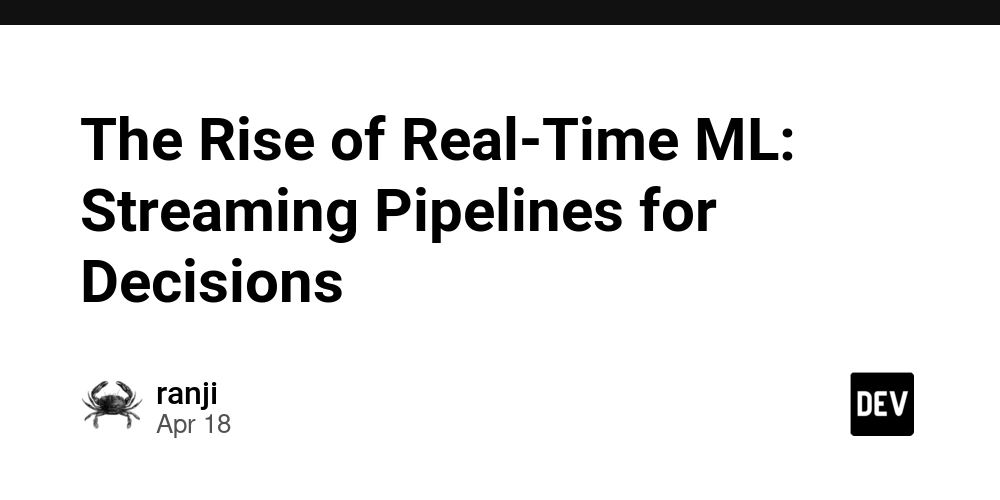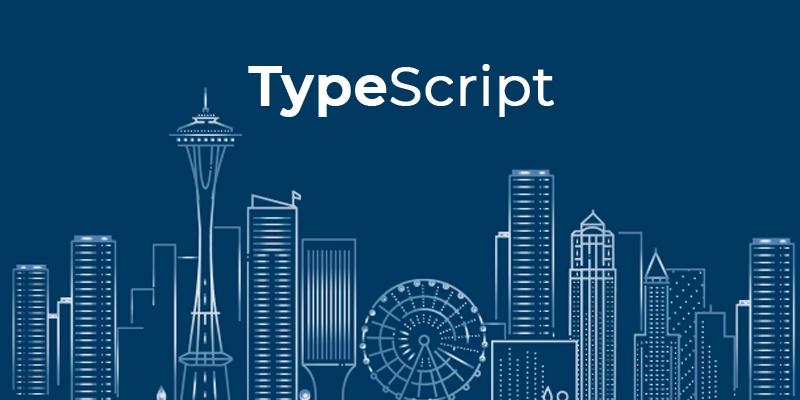The Rise of Real-Time ML: Streaming Pipelines for Decisions
The present fast-moving digital environment uses milliseconds to indicate achievement or failure, so real-time machine learning (ML) functions as a transformative breakthrough. ML processing in real-time differs fundamentally from the traditional batch-oriented data analysis systems because it enables systems to gain insights immediately from streaming data. Real-time machine learning identifies critical applications across various domains, including fraud detection and customized suggestion systems, as well as predictive component maintenance. Real-time machine learning demands that organizations develop strong streaming data pipelines able to manage the speed as well as handle the large amount of data variations in real-time streams. All modern data scientists need to understand proper pipeline design concepts. The benefits of taking a data science course in Dubai provide professionals with the tools they need to remain leaders in their field as data science continues to evolve. What is real-time machine learning? Real-time machine learning becomes a process where the system automatically completes predictions and model updates while processing incoming real-time data. Real-time ML operates through continuous data ingestion, followed by instant prediction functions, while adapting its model performance on short timescales, from seconds to milliseconds. Online e-commerce recommendation engines modify their recommendations through immediate analysis of user browsing actions. A banking transaction system can identify illicit financial transactions that may occur during ongoing operations. The Shift from Batch to Stream The conventional approach to ML workloads depends on gathered data through time-delayed processing methods. The method functions effectively for historical analysis but does not meet requirements that rely on prompt decision-making. The industry transition toward stream processing derives from organizations pursuing instant analysis, along with adaptable information systems. A new generation of information systems uses stream processing frameworks, including Apache Kafka, Apache Flink, and Spark Streaming, although organizations can utilize these tools to construct streaming data pipelines; their systems process streaming data and generate instant responses. Data science professionals can learn modern tools and techniques by enrolling in an extensive data science course in Dubai, which includes real-time data processing and model deployment practices. Key Components of a Streaming Data Pipeline A complete real-time ML pipeline depends on various essential components. Raw data collection through data ingestion happens first by acquiring information from sensors, APIs, and transaction logs. The high-throughput data ingestion process relies on Kafka and AWS Kinesis tools for its implementation. The next step involves real-time data cleaning, which begins with processing incoming information before it is transformed and subsequently enriched. This real-time stream processing can be achieved through Apache Flink and Spark Streaming platforms. Real-time feature computation occurs in the next step, known as feature extraction. The production of suitable inputs for ML models must occur without any time delay during this critical step. The model inference process begins after the previous steps. The model receives prepared features at this point, enabling it to perform predictions immediately. The models remain lightweight because they are optimized for quick information processing. The system creates a feedback system that completes the operation. The model's output performance allows for model retraining processes, which keep the system accurate through time. A structured data science training in Dubai follows a standard progression to teach learners about these descriptive components through practical examples from real datasets. ML applications that need immediate processing fall into this category. Several industries must have real-time ML as a basic requirement since it goes beyond being a technological enhancement. The financial sector uses algorithms to identify fraudulent payments while also rapidly evaluating credit risks. Healthcare facilities use real-time monitoring systems that detect patient vital signs to trigger alerts for medical staff about abnormal results. E-commerce platforms adjust their product prices and generate recommendations using algorithms that update in real time based on individual user actions. Premature equipment breakdowns are prevented through predictive maintenance systems, which analyze sensor data from manufacturing facilities. Real-time data feeds drive the matching process of ride-sharing platforms between riders and drivers through their service. The choices executed in short periods lead to multiple benefits, including enhanced customer satisfaction, together with greater profits, and lifesaving opportunities a

The present fast-moving digital environment uses milliseconds to indicate achievement or failure, so real-time machine learning (ML) functions as a transformative breakthrough. ML processing in real-time differs fundamentally from the traditional batch-oriented data analysis systems because it enables systems to gain insights immediately from streaming data. Real-time machine learning identifies critical applications across various domains, including fraud detection and customized suggestion systems, as well as predictive component maintenance.
Real-time machine learning demands that organizations develop strong streaming data pipelines able to manage the speed as well as handle the large amount of data variations in real-time streams. All modern data scientists need to understand proper pipeline design concepts. The benefits of taking a data science course in Dubai provide professionals with the tools they need to remain leaders in their field as data science continues to evolve.
What is real-time machine learning?
Real-time machine learning becomes a process where the system automatically completes predictions and model updates while processing incoming real-time data. Real-time ML operates through continuous data ingestion, followed by instant prediction functions, while adapting its model performance on short timescales, from seconds to milliseconds.
Online e-commerce recommendation engines modify their recommendations through immediate analysis of user browsing actions. A banking transaction system can identify illicit financial transactions that may occur during ongoing operations.
The Shift from Batch to Stream
The conventional approach to ML workloads depends on gathered data through time-delayed processing methods. The method functions effectively for historical analysis but does not meet requirements that rely on prompt decision-making. The industry transition toward stream processing derives from organizations pursuing instant analysis, along with adaptable information systems.
A new generation of information systems uses stream processing frameworks, including Apache Kafka, Apache Flink, and Spark Streaming, although organizations can utilize these tools to construct streaming data pipelines; their systems process streaming data and generate instant responses.
Data science professionals can learn modern tools and techniques by enrolling in an extensive data science course in Dubai, which includes real-time data processing and model deployment practices.
Key Components of a Streaming Data Pipeline
A complete real-time ML pipeline depends on various essential components. Raw data collection through data ingestion happens first by acquiring information from sensors, APIs, and transaction logs. The high-throughput data ingestion process relies on Kafka and AWS Kinesis tools for its implementation.
The next step involves real-time data cleaning, which begins with processing incoming information before it is transformed and subsequently enriched. This real-time stream processing can be achieved through Apache Flink and Spark Streaming platforms.
Real-time feature computation occurs in the next step, known as feature extraction. The production of suitable inputs for ML models must occur without any time delay during this critical step.
The model inference process begins after the previous steps. The model receives prepared features at this point, enabling it to perform predictions immediately. The models remain lightweight because they are optimized for quick information processing.
The system creates a feedback system that completes the operation. The model's output performance allows for model retraining processes, which keep the system accurate through time.
A structured data science training in Dubai follows a standard progression to teach learners about these descriptive components through practical examples from real datasets.
ML applications that need immediate processing fall into this category.
Several industries must have real-time ML as a basic requirement since it goes beyond being a technological enhancement. The financial sector uses algorithms to identify fraudulent payments while also rapidly evaluating credit risks. Healthcare facilities use real-time monitoring systems that detect patient vital signs to trigger alerts for medical staff about abnormal results. E-commerce platforms adjust their product prices and generate recommendations using algorithms that update in real time based on individual user actions.
Premature equipment breakdowns are prevented through predictive maintenance systems, which analyze sensor data from manufacturing facilities. Real-time data feeds drive the matching process of ride-sharing platforms between riders and drivers through their service.
The choices executed in short periods lead to multiple benefits, including enhanced customer satisfaction, together with greater profits, and lifesaving opportunities across a range of fields.
Challenges in Real-Time ML Implementation
The implementation of real-time ML provides transformative outcomes, yet it requires handling distinct challenges. The implementation of real-time ML demands extremely advanced technical procedures. The required system characteristics include high scalability as well as fault tolerance and minimal latency. Lack of time for data validation stands as a critical challenge because data quality must be addressed immediately. Model accuracy maintenance depends on reliable retraining systems, which must be implemented to meet this requirement.
Professionals who want to develop production-ready solutions should consider enrolling in a data science course in Dubai, as the program helps them effectively handle real-world implementation issues.
The Importance of Model Monitoring
Real-time ML benefits greatly from continuous monitoring systems that remain active throughout its deployment phase. The deployed models experience concept drift, which occurs when the statistical properties of the input data change throughout their operational phase. Model performance suffers considerable degradation when such drift occurs without adequate correction.
The monitoring process involves tracking essential performance indicators (KPIs) while detecting abnormal behaviors and setting up alert systems that trigger when the model's output diverges from the expected results. The model's performance remains consistent when combined with Prometheus, Grafana, and custom dashboards.
The intensive study of these advanced topics takes place during data science training in Dubai, where students learn about the genuine work tools used by MLOps professionals and data engineers.
Real-Time ML and the Future of Decision-Making
The next phase of decision-making depends significantly on generating immediate insights in real time. Operational speed based on data processing will define future market success because digital industry transformation continues. Any business decision that operates both swiftly and intelligently creates an advantage that translates into more success.
Developing talent through education becomes essential for organizations. Completing a data science course in Dubai enables students to develop crucial modern skills that boost the region's position as a global leader in data science while they learn valuable competencies.
Final Thoughts
Real-time ML represents a significant transformation that affects how businesses apply data analysis. Businesses now focus on real-time foresight by making predictions as events occur, replacing their reliance on historical data analysis.
The fundamental aspect of data-driven economic success relies on establishing dependable streaming data pipelines and having proficiency in their development and management.
A structured data science course in Dubai will provide essential technical foundations, practical experience, and industrial relevance, enabling executives to succeed in this domain. A well-rounded data science training in Dubai allows students to to fulfill the real-time requirements of contemporary businesses.





























![[Webinar] AI Is Already Inside Your SaaS Stack — Learn How to Prevent the Next Silent Breach](https://blogger.googleusercontent.com/img/b/R29vZ2xl/AVvXsEiOWn65wd33dg2uO99NrtKbpYLfcepwOLidQDMls0HXKlA91k6HURluRA4WXgJRAZldEe1VReMQZyyYt1PgnoAn5JPpILsWlXIzmrBSs_TBoyPwO7hZrWouBg2-O3mdeoeSGY-l9_bsZB7vbpKjTSvG93zNytjxgTaMPqo9iq9Z5pGa05CJOs9uXpwHFT4/s1600/ai-cyber.jpg?#)










































































































































![[The AI Show Episode 144]: ChatGPT’s New Memory, Shopify CEO’s Leaked “AI First” Memo, Google Cloud Next Releases, o3 and o4-mini Coming Soon & Llama 4’s Rocky Launch](https://www.marketingaiinstitute.com/hubfs/ep%20144%20cover.png)





























































































































![[FREE EBOOKS] Machine Learning Hero, AI-Assisted Programming for Web and Machine Learning & Four More Best Selling Titles](https://www.javacodegeeks.com/wp-content/uploads/2012/12/jcg-logo.jpg)








































































![Rogue Company Elite tier list of best characters [April 2025]](https://media.pocketgamer.com/artwork/na-33136-1657102075/rogue-company-ios-android-tier-cover.jpg?#)








































































_Andreas_Prott_Alamy.jpg?width=1280&auto=webp&quality=80&disable=upscale#)






























































































![What’s new in Android’s April 2025 Google System Updates [U: 4/18]](https://i0.wp.com/9to5google.com/wp-content/uploads/sites/4/2025/01/google-play-services-3.jpg?resize=1200%2C628&quality=82&strip=all&ssl=1)










![Apple Watch Series 10 Back On Sale for $299! [Lowest Price Ever]](https://www.iclarified.com/images/news/96657/96657/96657-640.jpg)
![EU Postpones Apple App Store Fines Amid Tariff Negotiations [Report]](https://www.iclarified.com/images/news/97068/97068/97068-640.jpg)
![Apple Slips to Fifth in China's Smartphone Market with 9% Decline [Report]](https://www.iclarified.com/images/news/97065/97065/97065-640.jpg)




































































































































